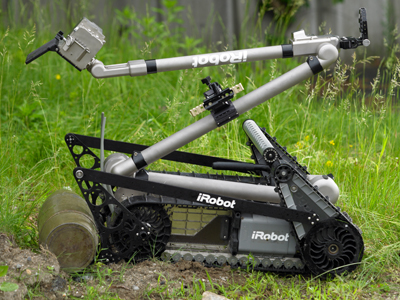2012 INDUCTEES
Big Dog | NAO | PackBot | WALL-E
Category: Education & Consumer
PackBot

PackBot isn't much to look at — in its most basic configuration, it's not much more than a deck with multiple treads. Usually, it also sports a gawky, multi-jointed arm. But take note because this is the look of a hero.
When the twin towers fell on 9-11, PackBot was sent into the rubble by first responders. During military operations in Iraq and Afghanistan, U.S. soldiers have sent PackBot on thousands of reconnaissance, bomb disposal and other dangerous missions. And when a 2011 tsunami crippled the Fukushima nuclear reactors in Japan, PackBot was the first to enter the nuclear plant and help to shut it down.
It is one of the most successful battle-tested robots in the world.
PackBot was developed by iRobot in the 1990s, initially with the support of the Defense Advanced Research Projects Agency. Since then, the company has delivered more than 3,500 PackBots in a variety of configurations to military and civil defense forces worldwide.
The teleoperated robot is small and easily transportable. Weighing just 24 pounds without batteries, its deck is just seven inches high, 27 inches long and 20 inches wide. It can move at speeds of almost 6 mph and its batteries enable four hours of continuous operation — up to 10 miles of travel — on one charge. This rugged robot includes GPS, accelerometers, and an inclinometer among its sensors. It can be outfitted with a variety of manipulator arms that can lift up to 15 pounds or extend a camera into areas of interest.
In accepting PackBot's induction into the Robot Hall of Fame, Tom Phelps, iRobot's director of robotics products, North America, noted that the robot has inspired a new generation of robots. But PackBot's most important contribution, he added, was this:
"It has inspired postcards from soldiers that read: You have saved lives today."





